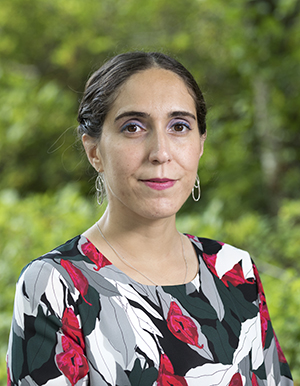
Lynn Kamerlin, Professor and Georgia Research Alliance Vasser Woolley Chair in Molecular Design, School of Chemistry and Biochemistry, Georgia Tech
"Conformational Dynamics and the Emergence of New Enzymes"
Abstract:
Enzymes are conformationally dynamic, and recent years have witnessed an explosion of interest in the role of this dynamicsin enzyme evolution, as well as how it can be exploited for engineering novel enzymes. In particular, the active sites of many enzymes are decorated by long mobile loops, the plasticity of which can play important roles in modulating enzyme activity, selectivity and even the pH-dependency of catalysis. The motion of these loops is complex, with catalytic loops often sampling a variety of metastable conformational sates, the relative populations of which can be evolutionarily optimized to control the enzyme’s biochemical and biophysical properties. Further, catalytic loops rarely move in isolation, with their motions often being correlated with that of other “auxiliary” loops, which in turn are regulated by communication networks of correlated motions that can span across full protein scaffolds. Using a variety of computational tools, our group has dissected the links between loop dynamics, catalysis and evolution in a range of systems including (but not limited to) triosephosphate phosphate isomerase [1], protein tyrosine phosphatases [2-4], and the enzymes of histidine and tryptophan biosynthesis [5], as model systems for understanding the role of loop dynamics in catalysis and enzyme evolvability more generally. This has been coupled with developing new software to dissect protein allosteric communication pathways [6], as well as practical examples of how conformational dynamics can be exploited to generate de novo enzymes that catalyze an anthropogenic reaction [7-8], with catalytic proficiencies approaching that of their naturally occurring counterparts. When combined with biochemical, structural and biophysical characterization, our data highlight the importance of loop motion to the emergence and evolution of novel enzymes, and provide a blueprint for exploiting loop dynamics (and conformational dynamics more broadly) as a powerful tool for enzyme engineering.